Top 12 All-Time Most Controversial Fights
No sport has courted as much scandal and public outrage as boxing. From dives and fixed fights, to outrageous decisions, not to mention the shady stuff behind closed doors with crooked promoters and our so-called sanctioning organizations, the fight game has always been fertile ground for double-dealing and corruption. Controversial outcomes are just an intrinsic part of an enterprise sportswriter Jimmy Cannon famously called “the red-light district of sports.”
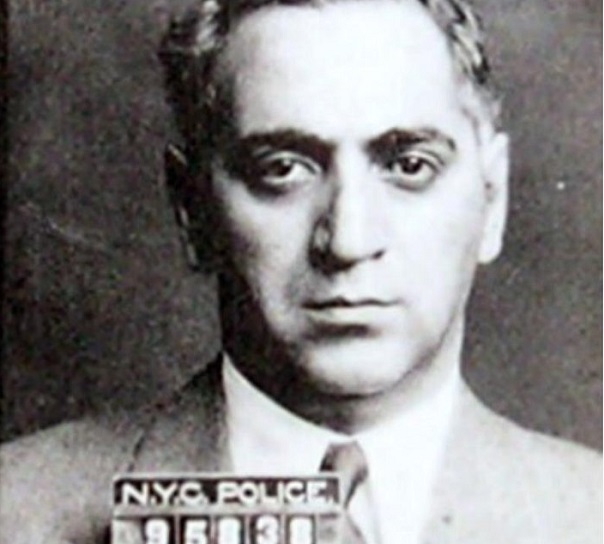
For the purposes of this list we’re putting aside outside-the-ring scandals, failed drug tests, ring deaths, or bad decisions (the latter being a massive list all on its own), and instead focusing on the questionable outcomes which inspired shock, outrage and vociferous arguments. These are the contests which were anything but satisfying or conclusive, with the resulting scandal and speculation profoundly affecting both the careers of their participants as well as pugilism itself, and drawing the wrong kind of attention from the public at large. Check ’em out:
12. Lulu Perez TKO2 Willie Pep, Feb. 26 1954: Former champ and acknowledged all-time great Pep faced Perez in Madison Square Garden and anyone paying close attention knew something was deeply awry. On the day of the match the wagering odds changed dramatically, with some bookies abruptly refusing to take bets. Clearly the word was out that something was rotten at the Garden.
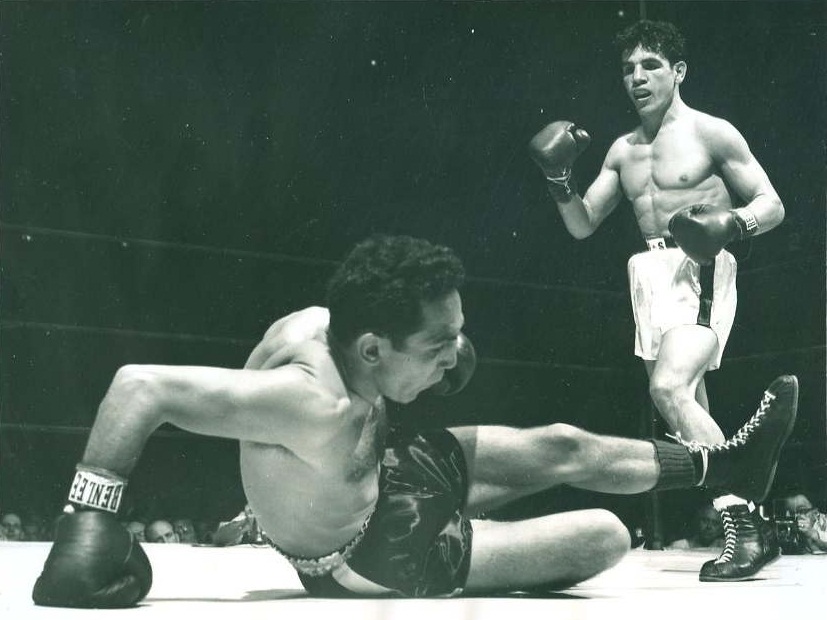
Acknowledged defensive genius Pep was then decked three times in round two, forcing an automatic stoppage, and the arena was filled with boos and catcalls. The former champion was immediately suspended by the state athletic commission and all but the most naive realized the fix had to be in. While Pep forever insisted he never threw the fight, but his 1980 libel suit against a journalist who strongly implied otherwise was rejected by the jury after just fifteen minutes of deliberation.
11. Ad Wolgast KO13 Joe Rivers, July 4 1912: Wolgast, aka “The Michigan Wildcat,” was defending his world lightweight title in Vernon, California against the tenacious Rivers and it was a crowd-pleasing, action-packed battle until round thirteen when the two combatants connected with heavy, hurtful shots at precisely the same time. The fighters collapsed in a heap and referee Jack Welsh commenced counting.
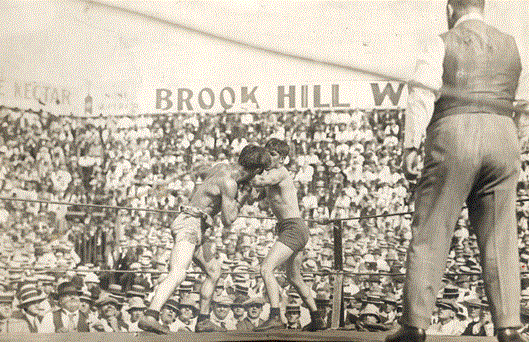
Then, in an action regarded as inexplicable by all in attendance, Welsh actually helped a dazed Wolgast to his feet as he finished the count before raising the champion’s hand, completely ignoring the fact that Rivers was the one who had been felled by a vicious blow to the crown jewels. Welsh briefly argued his case before wisely making a hasty exit as the dismayed crowd threatened a full-scale riot. In his dressing room, a distraught Rivers showed reporters a sizable dent in his aluminum protector cup, but to no avail as Wolgast, who was renowned for aiming blows at his opponents’ nether regions, remained the lightweight champion of the world.
10. Billy Fox TKO4 Jake LaMotta, Nov. 14 1947: The controversy for this match actually began well before either Fox or LaMotta had set foot in Madison Square Garden. The word was out in advance that something less than kosher was in the works, the erratic betting odds reflecting this perception. The chatter became so loud that prior to fight-time the current chair of the New York State Athletic Commission twice visited both boxer’s dressing rooms in an attempt to dissuade them from proceeding with any chicanery.
Fox then became the first boxer to ever stop LaMotta when a helpless looking “Bronx Bull” was rescued by the referee in round four, the crowd loudly booing the obvious set-up. The result led to the immediate suspension of LaMotta’s boxing license and widespread speculation about corruption in boxing. Years later LaMotta publicly admitted that he threw the fight in order to obtain an overdue shot at the world middleweight title.
9. Luis Resto W10 Billy Collins Jr., June 16 1983: In one of the most disturbing and tragic episodes in ring history, Luis Resto battered prospect Billy Collins Jr. in Madison Square Garden for ten rounds with the equivalent of brass knuckles on both fists. Resto had only eight knockouts in nineteen wins and was not regarded as any kind of dangerous puncher, but as early as round two his blows were leaving marks and welts on Collins’ visage. During the bout Collins told his father and trainer, Billy Collins Sr., that something just wasn’t right with Resto’s gloves. After the final bell, the elder Collins shook hands with Resto, immediately knew his son’s deduction was correct, and summoned the attention of ringside officials.
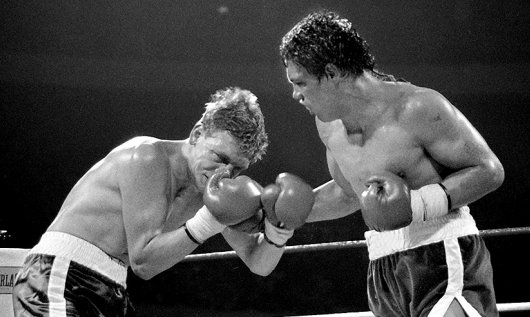
The gloves were inspected and it was determined that much of their horsehair padding had been removed. Decades later a remorseful Resto claimed that in addition to the tampering of the gloves, his handwraps had been soaked in plaster. Collins suffered a battering so vicious he was barely recognizable after the fight and the damage to his eyes meant an immediate end to his boxing career. Both Resto and his trainer, Panama Lewis, were criminally charged for the incident and eventually banned from boxing. Less than a year later, a despondent Collins Jr. died in a car accident.
8. Primo Carnera vs Jack Sharkey II, June 29 1933: Two factors made the rematch between Sharkey and Carnera a highly controversial affair. First, by this point the fact the hulking Primo was controlled by the mob and that many of his wins were, to say the least, suspect, was widely accepted. Second, Sharkey, a highly skilled boxer with wins over Johnny Risko, Tommy Loughran and Harry Wills to his credit, had defeated Carnera by a wide margin when they battled in 1931, completely dominating the Italian over fifteen rounds and coming close at more than one point to forcing a stoppage.
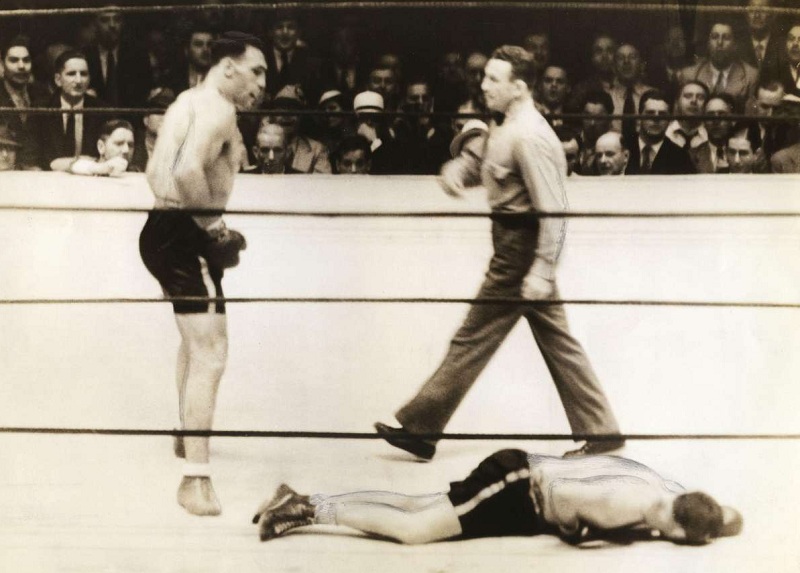
And yet the betting odds for the rematch were strangely close, with reports from some quarters that Carnera was viewed as the favorite. Despite the significant disadvantages in height, reach and weight, Sharkey again had the edge until round six when Carnera landed an uppercut that put “The Boston Gob” on the canvas in a heap. He barely moved as he was counted out. The outcome was viewed as suspicious from the start and speculation only intensified as time passed and more became known about the extent of the corruption behind Carnera’s career. Sharkey insisted until his dying day the fight was on the level, but this is one heavyweight title bout that will always be controversial.
7. Joe Gans vs Terry McGovern, Dec. 13 1900: Chicago was the site of this meeting of all-time greats with both fighters in their respective primes. If ever a match-up should have resulted in an exciting and highly competitive tilt this was it, despite the fact lightweight Gans enjoyed a natural size and weight advantage over featherweight McGovern. But such was not the case. Instead Gans was decked seven times before being counted out in the second round, with fans booing the obvious fix even before it ended.

The widespread word on the street was that the match was not on the level and virtually no one regarded the result as legit. And Gans vs McGovern proved to be not just a controversial boxing match, but a most consequential one, as it led to the state of Illinois banning professional prizefighting for almost thirty years.
6. Tom Sharkey vs Bob Fitzsimmons, Dec. 2, 1896: This highly anticipated heavyweight showdown drew national interest and brisk ticket sales in San Francisco, but it ended with cries of disgust at its final outcome. The word on the street was that Wyatt Earp would be the referee, but rumors swirled that the legendary lawman was bought and paid for by Sharkey and his team. Before the match got underway Fitz’s manager demanded Earp be replaced, but he was rebuffed, only to see his suspicions confirmed and his fighter robbed of almost certain victory.
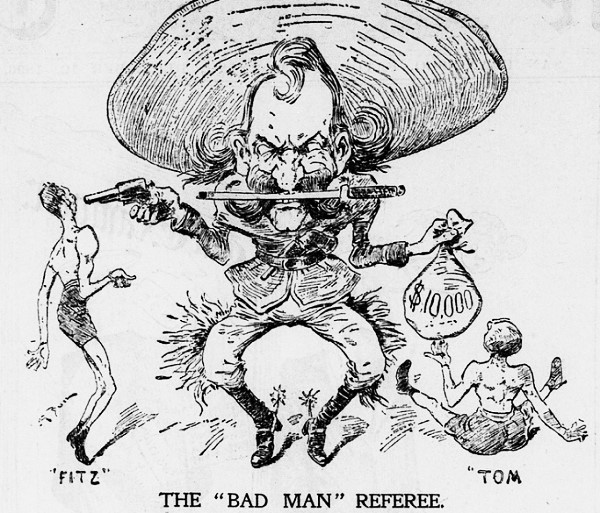
According to eyewitness accounts, “The Fighting Blacksmith” was much the more effective combatant throughout and in round eight a series of blows sent “Sailor Tom” to the floor. But Earp ruled that an illegal punch to the groin had put Sharkey down and he immediately disqualified “Ruby” and declared the prostate Sharkey the victor. The crowd erupted in outrage and Earp beat a hasty exit. Such was the resulting controversy, it hounded the former lawman to his grave and overshadowed his gun-fighting exploits for decades.
5. Mike Tyson vs Evander Holyfield II, June 28 1997: At the time, this was one of the most eagerly anticipated events in all of boxing history, a huge “superfight” rematch. Millions of sports fans were curious to see if Tyson could reverse his shocking defeat at the hands of Holyfield six months before, one of the all-time great upsets. Thus, the controversy of what transpired on that surreal night cannot be overstated.
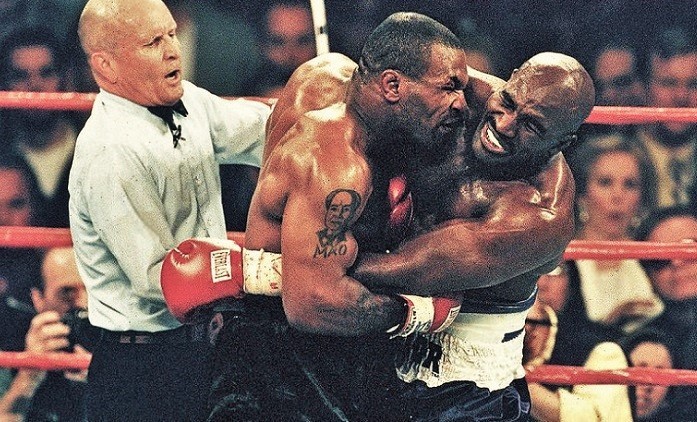
As in their first meeting, Holyfield refused to be intimidated and repeatedly forced Tyson into a defensive posture. But the fight took a shocking turn in round three when Tyson resorted to viciously biting Holyfield, not once but twice, his chomping violent enough to remove a portion of Evander’s right ear. “Iron Mike” was disqualified and afterwards more than a few pundits wondered aloud if boxing could ever recover. Ticket-buyers threw up their hands in disgust as a public apology from Mike did nothing to compensate them, the event having generated some two hundred million in gross revenue. Tyson was fined three million and his boxing license was suspended for one year.
4. Julio Cesar Chavez vs Meldrick Taylor I, March 17 1990: In one of the most exciting battles of the decade, Meldrick Taylor clearly held a points lead on Julio Cesar Chavez as the bell rang for the final round in their clash for the unified 140 pound championship. Then, with seconds left in the match, Chavez landed a huge right hand and scored the bout’s only knockdown. Taylor was on his feet at the count of six as his trainer, Lou Duva, climbed onto the ring apron and the clock wound down to the final bell.
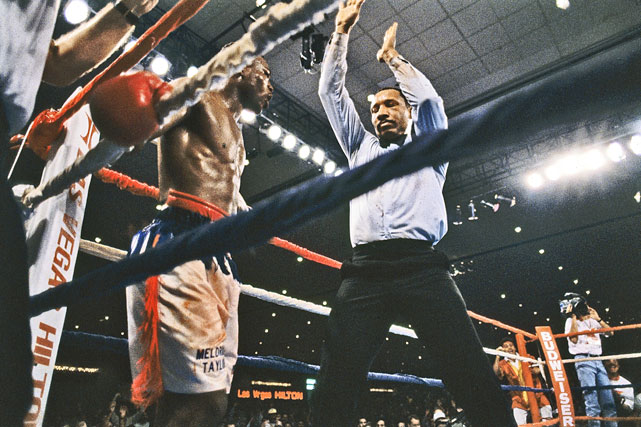
But, distracted by Duva, Taylor failed to answer referee Richard Steele’s “Are you okay?” question and Steele immediately halted the match with precisely two seconds left on the clock. Shock and pandemonium ensued and has never completely subsided since. In the history of hasty stoppages in boxing, this holds a special place as it will no doubt be feverishly questioned and debated until the end of time between those who believe Steele was simply doing his job, and those who insist Taylor deserved a chance to continue.
3. Sugar Ray Leonard vs Roberto Duran II, Nov. 25 1980: The previous June, in one of the most eagerly anticipated bouts in boxing history, former lightweight champion Duran, aka “Manos de Piedra,” won his second world title after a thrilling fifteen round war, the famous “Brawl In Montreal,” against welterweight champ Leonard. The victory gave Duran universal standing as the best boxer on the planet. Sugar Ray then pushed for an immediate rematch and five months later, at the Superdome in New Orleans, it was Leonard who took command, having things his way to such an extent that he taunted Duran, mocking his inability to seize control. Then, in round eight, the Panamanian legend abruptly turned his back, walked away, and refused to continue.
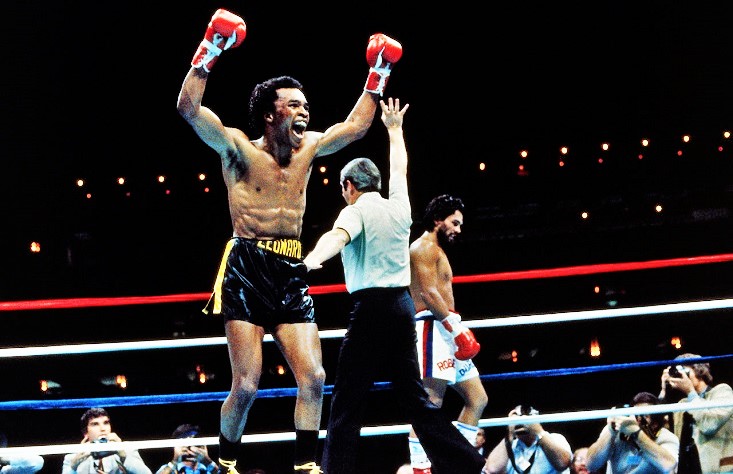
The fact that Roberto Duran, the most “macho” and fierce of Latin American boxers, had quit could scarcely be comprehended at the time. So shocking was the result that many refused to believe the match was on the level. Duran himself blamed debilitating stomach cramps, an excuse which only fueled further suspicion, not to mention the anger of Roberto’s former fans in his native Panama. With a single rash decision Duran transformed his image and standing, gave boxing’s detractors a new means by which to attack the sport, and suffused the simple phrase of “No mas” with implications which, decades later, still resonate.
2. Jack Dempsey vs Gene Tunney II, Sept. 22 1927: In the unlikely circumstance that anyone reading this doesn’t quite understand the difficulty with the famous “Long Count” fight, just take a quick look at Dempsey’s amazing four minute brawl with Luis Firpo in 1923. The Argentinian challenger hits the canvas seven times in the first three minutes of that wild donnybrook, and each time Dempsey hovers like The Grim Reaper over his stricken foe, waiting for the instant Firpo’s gloves leave the canvas to resume beating the daylights out of him.
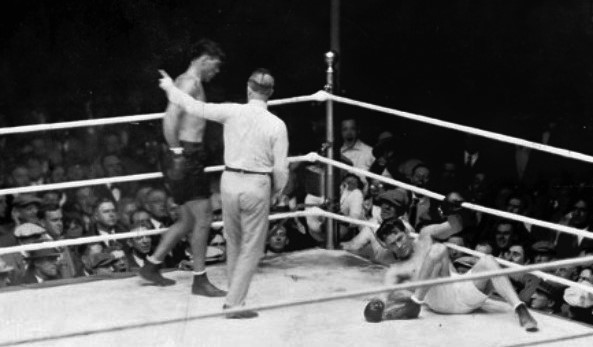
But by 1927 the rules had changed. Now when a boxer scored a knockdown, he was required to immediately go to the furthest neutral corner and the referee was at liberty to wait until that happened before starting his count. In round seven of a match which had attracted over a hundred thousand paying fans, and which Tunney was clearly winning, Dempsey broke through and landed a left hook that turned the legs of “The Fighting Marine” to jelly. The challenger’s follow-up combination put Tunney on his backside, and when ten seconds had elapsed Tunney was still on the canvas.
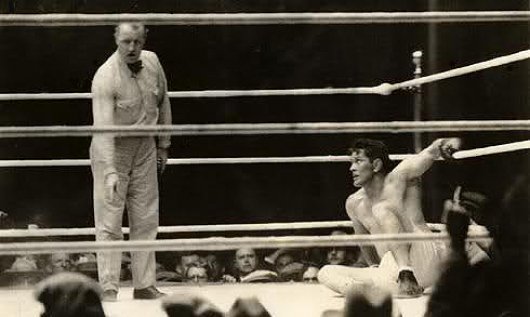
But that was because Dempsey had failed to immediately obey referee Dave Barry’s command to retreat to a neutral corner, which ate up precious time, and then Barry only began counting once Dempsey had followed his order. Tunney then beat the official count and went on to win, but the arguments, speculations and conspiracy theories about the knockout Dempsey almost scored, have since never ceased. Indeed, for decades many fans clung to the conviction that “The Manassa Mauler” was the victim of a great injustice, but it should be noted that Jack himself never publicly complained about the outcome.
1. Muhammad Ali vs Sonny Liston II, May 25 1965: Just how controversial was this particular clash for the heavyweight championship of the world? Let us count the ways. First, there was the fact that its prelude, Clay vs Liston I, had inspired more than its share of controversy all on its own as the defending champ, an overwhelming betting favorite, quit on his stool at the end of round six, this after his corner likely tried to sabotage the bout by putting liniment on Sonny’s gloves which got into Clay’s eyes and rendered the challenger blind for much of round five.
Then there was the fact that the boxer who defeated the seemingly unbeatable Liston in February of ’64 had since become one of the most maligned, divisive and, yes, controversial figures in all of America. After winning the heavyweight title, Cassius Clay announced his allegiance to the Black Muslim cult and its leader, Elijah Muhammad, before changing his name to Muhammad Ali.

After much contractual wrangling stemming from the fact that an immediate rematch only added to the suspicions swirling around the first bout, a return was eventually set for November in Boston. But just days before the match, Ali suffered a hernia which necessitated surgery. In the meantime, a bitter and public quarrel was unfolding between the leader of the Black Muslims and prominent former follower Malcolm X, one which forced the new champion to choose sides. Ali remained loyal to leader Elijah and on February 21, 1965, Malcolm X was assassinated. Speculation ensued that Ali would be the target of retaliation, a threat taken seriously enough that the FBI elected to guard Ali around the clock with a squad of armed officers.
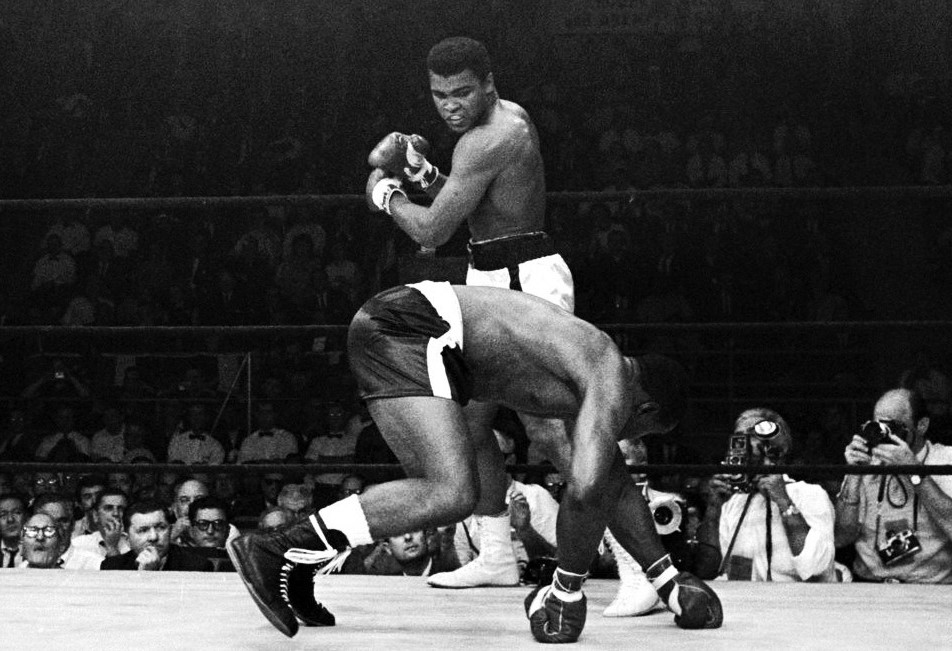
Organizers of the rematch settled on the unlikely locale of Lewiston, Maine, but the fight itself only led to more controversy. The atmosphere of tension and violence surrounding the event was blamed for a paltry crowd of some 2500 fans at Maine’s first (and last) heavyweight championship match, and when Liston collapsed midway through round one, almost no one saw the blow that put him there; the clout that decided the contest would soon come to be known as “The Phantom Punch.”
With Liston on the canvas, Ali shouted at him to rise before circling the ring in a manic victory dance. Referee Jersey Joe Walcott, preoccupied with trying to corral Ali, failed to communicate with the timekeeper and thus never administered a count. A seemingly disoriented Liston climbed to his knees but then collapsed again, before eventually getting to his feet and attempting to resume the fight. Walcott was then informed that Liston had indeed been on the canvas for more than ten seconds and he finally halted the match and declared Ali the winner.
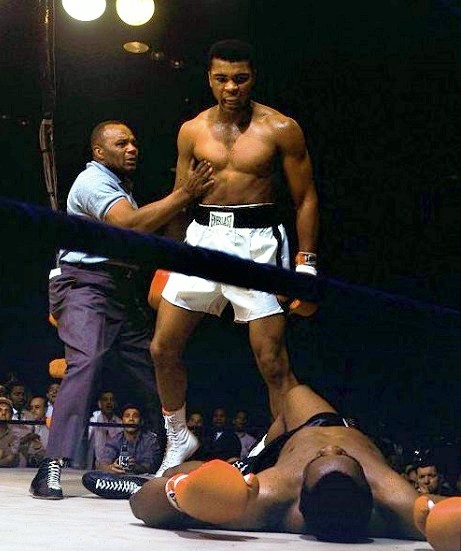
Ever since theories have abounded as to what exactly transpired. Films show that Ali did connect with a chopping counter right hand to the side of Liston’s head — he later dubbed it his “Anchor Punch” — and the challenger then toppled forward before rolling onto his back. But while a punch did land and appeared to precipitate a flash knockdown, the blow hardly seemed powerful enough to incapacitate the durable Liston. Indeed, Sonny later stated to more than one writer that the reason he didn’t get to his feet was because 1. Ali was hovering over him, and 2. he didn’t hear a count. But his swooning after getting to his knees suggests that either he was legitimately dazed and confused, or he decided “To hell with it” and quit.
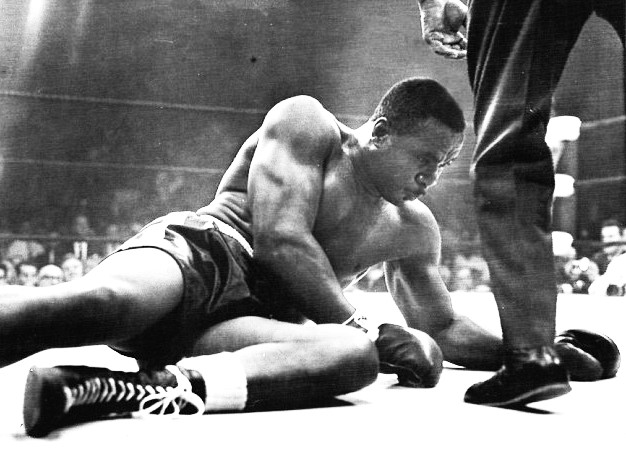
Some speculated Liston wanted an early exit for fear of being killed by an errant bullet if a follower of Malcolm X tried to assassinate Ali. Others concluded the fight had to be fixed, though it’s difficult to imagine a more clumsy way to execute a dive. (And if that was Liston’s intention, why would he get up and then try to resume fighting?) To this day some believe Liston, an ex-con and former mob enforcer, threw both fights with Ali, though hard evidence to bolster that theory has never surfaced. The bottom line is the mysterious and bizarre Ali vs Liston rematch has never not been controversial in all the years since, and it will forever stand as a surreal episode of infinite weirdness, indeed, the most controversial match in the long history of the prize ring. — Robert Portis

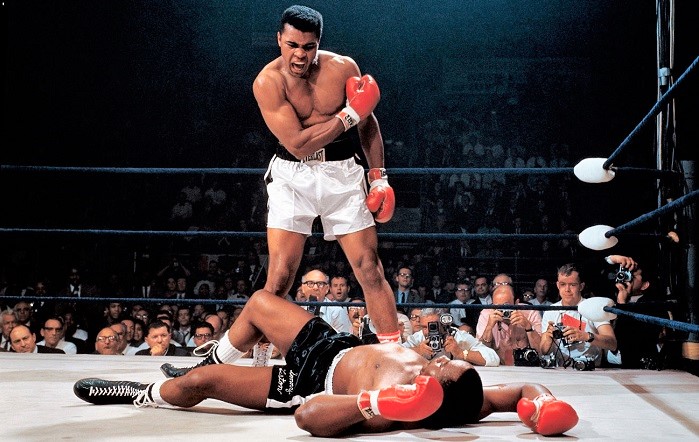

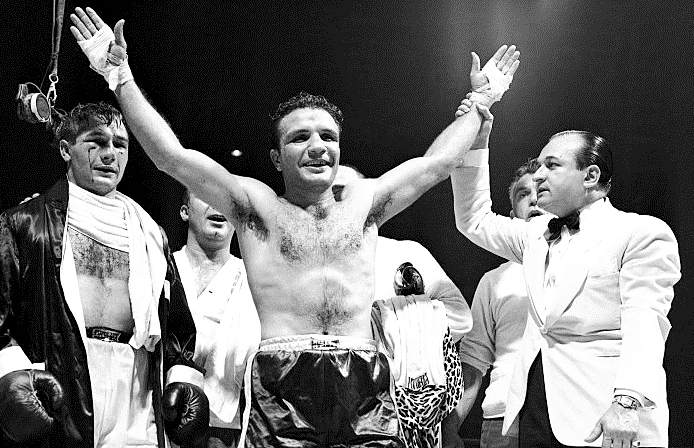
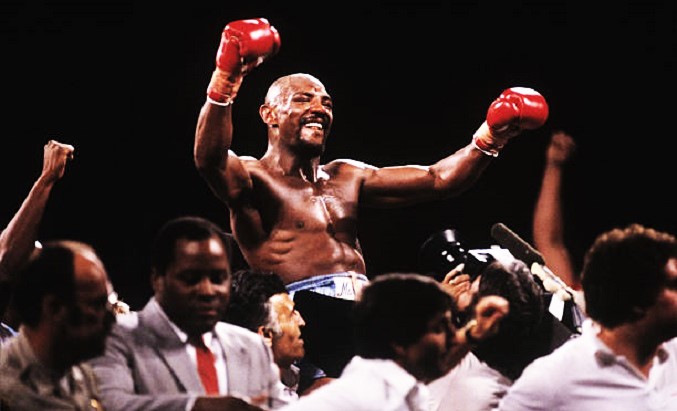
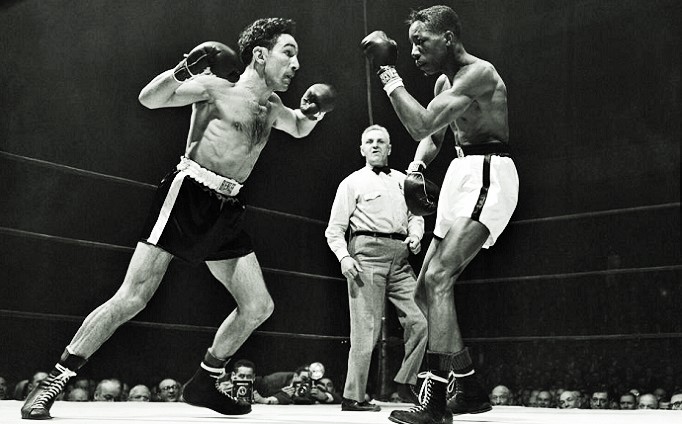
I am surprised Tyson vs Spinks never gets mentioned in these. Duran vs Leonard II? Duran looked very out of shape for that fight. I think he partied too much is a better explanation than a fix.
What’s controversial about the fight? A peak Tyson steamrollers Spinks, he’s clearly out for the count after being battered mercilessly.
On the 23rd of September 1992 at the Banqueting Suite, Elland Road, Leeds, Henry Wharton was given the decision over Fidel Castro Smith after having his head boxed off for twelve rounds. One of the most disgraceful decisions ever in British boxing.
On the 17th of October 2020 at the East of England Arena, Peterborough, Lewis Ritson was given the decision by two out of three judges over Miguel Vazquez, who had dominated Ritson throughout the fight. Another ‘result’ which was regarded as a joke and which brought British boxing into disrepute.